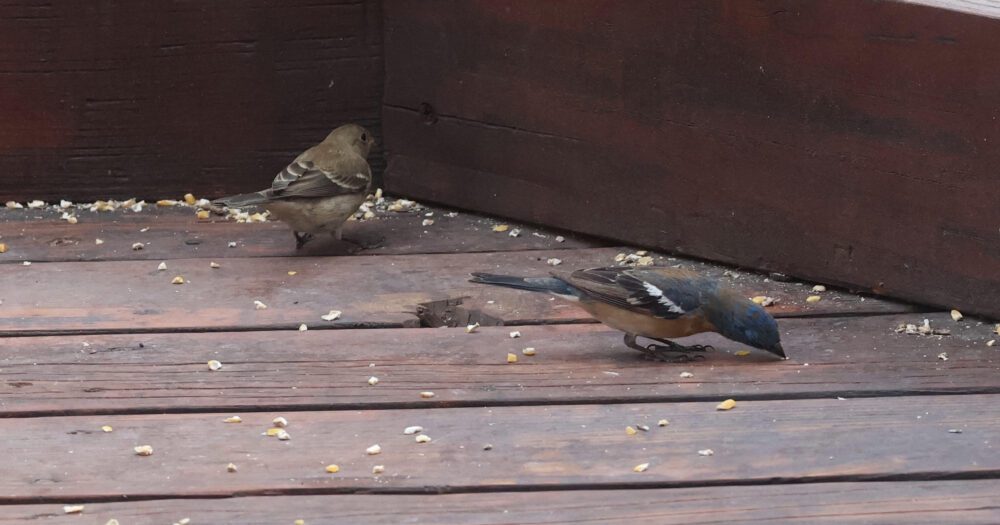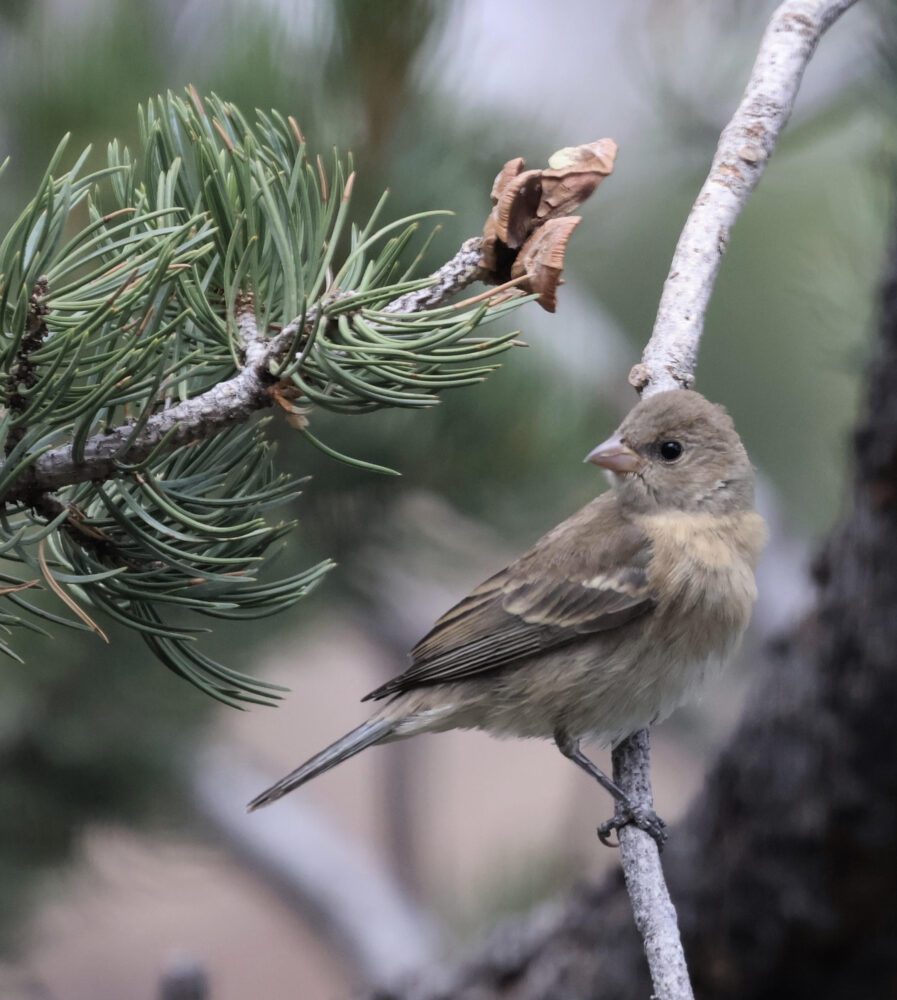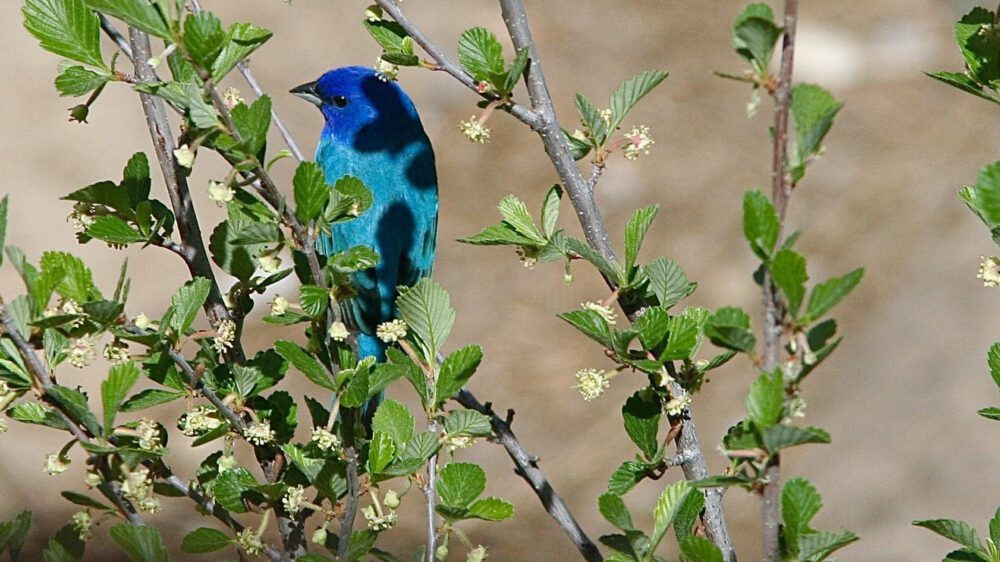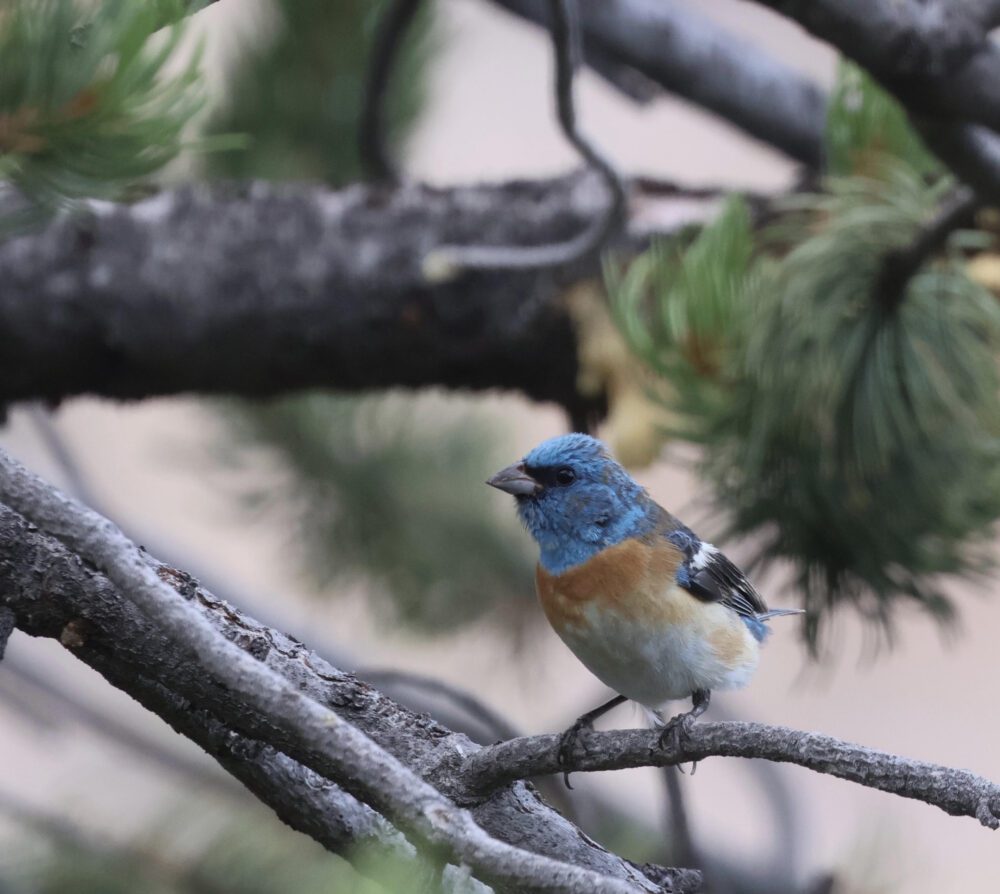by Selvi Viswanathan
I am fascinated this year by watching Lazuli Buntings visit for the past few days. The first sighting of a stunning male was by Hari in our yard. (Feature photo is his!) Then we saw two males and one female for a few more days. From the 19th, a pleasant surprise: juveniles and females (six of them!) came to the deck along with a couple of males. So I started filling the water dish with bird seed on the railing of the deck.
Normally, the buntings stop only for a couple of days during migration times in spring and fall, but today, August 27th, all the females and juveniles are still here, along with one male. I read that buntings migrate at night. We are having thunderstorms every evening, so maybe they are not leaving.
I have been reading on the internet and found more interesting facts. Why is the bird named Lazuli Bunting? Its brilliant blue plumage gave it the name of the gem lapis lazuli. Breeding males boast a brilliant blue head and back, a rusty-orange breast, a white belly, and two wing bars. The females are duller, buffy brown with pale wing bars.
More facts about Lazuli Buntings:
Breeding: Found in brushy areas of the western United States. The females build an open-cup nest in a shrub with soft materials like grass, hair, and spider silk. The male supports and defends the female. It takes about two weeks, and both parents feed insects to the young.
Wintering: They migrate to western Mexico.
Diet: Insects, seeds, and berries.
Interesting facts:
- Molting: They undergo a unique pre-basic molt on their breeding grounds, then migrate to special “hot spots” to finish molting before continuing to their winter grounds.
- Migration: Lazuli Buntings are short-distance migrants, with males often arriving on breeding grounds before females in spring. Here in our yard, we see these buntings during both spring and fall, stopping by for a couple of days. They migrate at night.
- Song: The most unique fact is the distinct call of the male. Each male develops his own song in his first year to attract mates and defend territory, potentially learning tunes from older males in the neighborhood.
- Hybridization: They tend to hybridize with their closest relative, the Indigo Bunting.
- Names: Some names for these lovely buntings, used as decoration or mural themes, are very fitting for such strikingly beautiful birds!
I felt that seeing these birds this time inspired me to learn more, and I hope you enjoy them too.
Photos by Selvi Viswanathan.






Beautiful buntings, love the blues… and interesting facts about them, thanks for sharing:)
Thank you Mathy very much
Lovely pictures, extensive and pains taking analysis done on the birds.
Thank you glad you liked it. Interesting facts made me to share
Birds, especially little birds always make me smile with delight. The first picture Lazuli camouflaged on the frost branch. At the same time its bright blue hue stands out. It is so philosophical. You can hide the beauty but no one can hide its glory.
Keep your good work Selvi.
Best wishes
Janaki
Jani
Thank you very much you have said a profound thing. I will try and your encouragement will help me.
Very beautiful pictures and elaborate analysis done on the migration of the birds.
We’ve only had a male Lazuli bunting visit once several years ago at our house in the interior of Barranca Mesa. I think they must enjoy Selvi’s location next to the canyon and the water both in her “warbler pond” and on her deck. Selvi and Hari’s photos are wonderful and I understand that the last photo is of an indigo bunting for comparison with the Lazuli buntings in the other pictures. Thank you Selvi for sharing these with us.
Rozelle
Thank you very much.
Yes Indigo Bunting rare visit I luckily took the picture a couple of years ago. Just stopped for a few minutes.The shadows of the plant on the bird is interesting. It is a East Coast bird
Lovely Lazuli Buntings pictures are beautiful.Your analytical study about
them is very interesting.Thank you for sharing .
.
Thank you Lakita
I loved your photographs and this article. I loved the Indigo Bunting photograph too. I remember last year some of us saw female Indigo Bunting. They are beautiful but not as colorful as males. Enjoyed reading the article.
Thank you Mohini. Yes I included Indigo Bunting so it is mentioned in the blog.